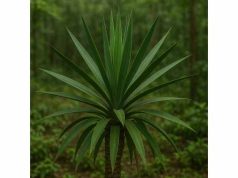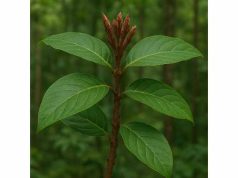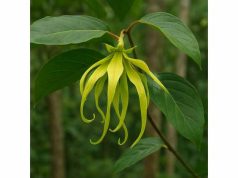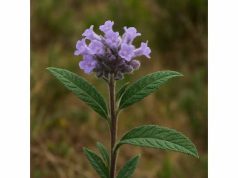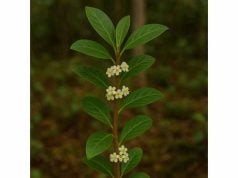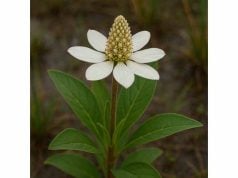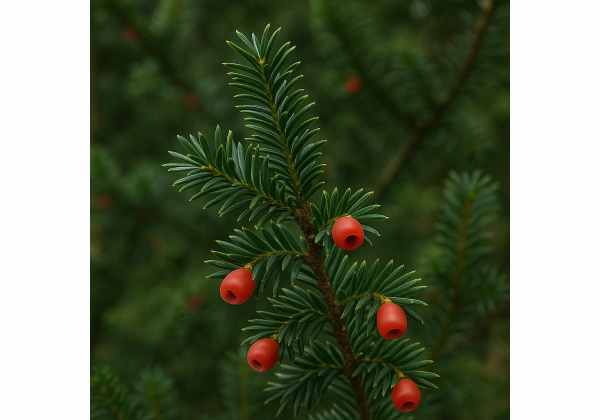
Yew (genus Taxus) is a venerable evergreen conifer with a storied history in both traditional herbalism and modern pharmacology. Renowned for potent compounds like taxanes (paclitaxel, docetaxel), flavonoids, lignans, and alkaloids, this tree offers remarkable anticancer, cardiotonic, anti-inflammatory, and antioxidant effects. From ancient Celtic remedies for rheumatism to today’s frontline chemotherapeutics, yew’s Medicinal Properties span wound care, cardiovascular support, and cancer treatment. However, its bioactive taxine alkaloids also pose toxicity risks, underscoring the need for standardized extracts and professional oversight. In this comprehensive guide, we explore yew’s botanical identity, chemical constituents, health benefits, applications, safety considerations, and key scientific discoveries.
Table of Contents
- Natural History and Identification Traits
- Chemical Profile and Bioactive Agents
- Health Enhancements and Fundamental Qualities
- Practical Applications and Safety Measures
- Research Highlights and Key Discoveries
- FAQ
Natural History and Identification Traits
Yews belong to the family Taxaceae and comprise roughly ten species of slow-growing evergreen trees and shrubs. Widely distributed across the temperate Northern Hemisphere, Taxus baccata (English yew) thrives in European woodlands, while Taxus brevifolia (Pacific yew) inhabits moist Pacific Northwest forests. Mature yews range from 2 to 20 meters in height, exhibiting a broad, often multi-stemmed form. Their dark-green, glossy needles, 2–4 cm long and narrowly lanceolate, spiral around slender branchlets. A distinctive feature is the bright red aril (berry-like seed coat) that envelops a single seed, ripening in autumn and persisting through winter to entice birds for seed dispersal.
Botanically, yews are dioecious: individual plants bear either pollen-producing male cones or seed-producing female structures. Male cones form inconspicuous clusters that release pollen in spring, whereas female cones evolve into arils through a reduction of three fused scales into a fleshy cup. Unlike many conifers, yews lack resin canals; instead, they accumulate potent taxine alkaloids in bark, leaves, and seeds, providing defense against herbivores and pathogens.
In its native habitats, yew grows in shaded understories on well-drained, slightly acidic soils, often on limestone outcroppings or rocky slopes. It tolerates both full sun and deep shade, though optimal growth occurs in partial canopy cover that mimics ancient woodland conditions. Yews are remarkably resilient to pruning, which has made them a mainstay for formal hedges and topiary in European gardens for centuries.
Cultivation requires soil rich in organic matter and consistent moisture without waterlogging. Seed germination is notoriously erratic, with dormancy periods up to 18 months; therefore, propagation by semi-hardwood cuttings—treated with rooting hormone in late summer—is common. Young plants demand moderate shade to prevent needle scorch, gradually acclimating to brighter conditions over two to three years.
Ecologically, yews provide winter sustenance for thrushes, waxwings, and small mammals that eat arils and disperse seeds. Their dense foliage offers shelter for nesting birds and small fauna. In managed landscapes, they serve as evergreen screens, pollution-tolerant urban specimens, and erosion-control plantings on slopes, thanks to extensive, fibrous root systems.
Chemical Profile and Bioactive Agents
Yew’s therapeutic allure arises from a complex arsenal of natural compounds. The most consequential Active Compounds include:
- Taxanes (Paclitaxel, Docetaxel)
- Diterpenoid alkaloids that stabilize microtubules, preventing cell division in cancerous tissues. Paclitaxel, isolated from T. brevifolia bark, revolutionized chemotherapy for ovarian and breast cancers. Docetaxel, a semi-synthetic analog from T. baccata, improves solubility and potency.
- Taxine Alkaloids
- Potent cardiotoxins (taxine A and B) that disrupt cardiac conduction and contractility. While toxic in crude extracts, their study informed the development of safer chemotherapeutic taxane derivatives.
- Flavonoids (Quercetin, Myricetin)
- Polyphenolic antioxidants that protect vascular endothelium, scavenge free radicals, and inhibit inflammatory enzymes (COX, LOX). They support heart health and mitigate oxidative stress-related aging.
- Lignans (Podophyllotoxin-Related)
- Cytotoxic molecules that induce apoptosis in tumor cell lines. Yew-derived lignans provide templates for new antineoplastic drug research.
- Phenolic Acids (Caffeic, p-Coumaric Acid)
- Antioxidant phenolics with antimicrobial and anti-inflammatory effects. They contribute to tissue protection and immune modulation.
- Triterpenoids (Ursolic Acid, Oleanolic Acid)
- Anti-inflammatory and hepatoprotective compounds enhancing liver detoxification pathways and reducing chemical-induced hepatic injury.
- Essential Oils (α-Pinene, Limonene)
- Volatile monoterpenes in trace amounts exhibit mild antimicrobial, expectorant, and mood-elevating properties.
- Sterols (β-Sitosterol)
- Plant sterols that help regulate cholesterol absorption and modulate immune responses, supporting cardiovascular and systemic health.
- Glycosides and Tannins
- Astringent constituents that constrict tissues, reduce minor bleeding, and foster wound healing when applied topically.
The synergy among these constituents underpins the broad Medicinal Properties of Yew, from potent anticancer effects to gentle antioxidant and anti-inflammatory support.
Health Enhancements and Fundamental Qualities
Yew’s diverse phytochemical profile confers multiple health-promoting effects:
- Anticancer Activity
Taxanes like paclitaxel bind to tubulin, stabilizing microtubules and halting mitosis in rapidly dividing cancer cells. This mechanism underlies yew-based chemotherapy regimens for ovarian, breast, lung, and pancreatic cancers, significantly improving survival rates when combined with other agents. - Cardiovascular Support
Flavonoids and sterols protect LDL cholesterol from oxidation, enhance endothelial function, and promote healthy blood flow. Early research on taxine alkaloids inspired modern cardiac glycoside analogs, although raw extracts are too toxic for direct heart therapy. - Anti-Inflammatory Effects
Phenolic acids and triterpenoids inhibit proinflammatory cytokines (TNF-α, IL-6) and enzymes (COX-2, LOX), providing relief in conditions like arthritis, inflammatory skin disorders, and autoimmune flare-ups. Topical formulations can soothe joint pain and reduce swelling. - Antioxidant Defense
Quercetin and myricetin scavenge reactive oxygen species, shielding cells from oxidative damage linked to aging, neurodegeneration, and chronic inflammatory diseases. Regular moderate consumption of yew-derived polyphenols supports long-term cellular health. - Hepatoprotective Action
Ursolic and oleanolic acids upregulate phase II detoxification enzymes in the liver, bolstering defense against chemical insults and supporting healthy enzyme profiles. Animal models show reduced liver enzyme markers following yew extract pretreatment. - Antimicrobial Properties
Essential oils and phenolic compounds inhibit the growth of Gram-positive bacteria (e.g., Staphylococcus aureus) and fungi (Candida albicans). Topical yew-based salves offer potential as natural antiseptics for minor skin infections. - Immune Modulation
Plant sterols and lignans enhance macrophage activity and regulate T-cell proliferation, contributing to balanced immune responses. This immunomodulatory effect can complement conventional therapies for chronic inflammatory and autoimmune conditions. - Wound Healing and Tissue Repair
Astringent tannins and antibacterial phenolics combine to accelerate clotting, reduce infection risk, and promote epithelialization when applied as poultices or salves on minor wounds and abrasions.
These Core Qualities render yew a dual-purpose herb: a source of life-saving cancer drugs and a reservoir of supportive botanicals for cardiovascular, inflammatory, and tissue repair needs.
Practical Applications and Safety Measures
Harnessing yew’s Uses demands strict adherence to standardized pharmaceuticals and safety protocols:
Traditional Herbal Uses
- Infusions: Early healers brewed mild teas from young foliage to relieve rheumatic pain. Due to taxine toxicity, this practice is obsolete in modern herbalism.
- Poultices: Crushed leaves applied externally to soothe joint inflammation and minor skin irritations, relying on tannins and phenolics for astringent and antimicrobial actions.
Modern Pharmaceutical Preparations
- Paclitaxel (Taxol): Administered intravenously under oncology supervision. Standard regimen: 175 mg/m² over three hours every three weeks, often with premedication to prevent hypersensitivity reactions.
- Docetaxel: A next-generation taxane dosed at 75 mg/m² IV every three weeks, combined with corticosteroids to minimize fluid retention and allergic responses.
Supplemental Forms (Not recommended without medical oversight)
- Standardized Extracts: Capsules or tinctures with quantified flavonoid or lignan content provide antioxidant support but must exclude taxine alkaloids due to cardiotoxicity.
- Topical Salves: Herbalists may craft salves by infusing yew foliage in carrier oils (e.g., olive, jojoba) and blending with beeswax to treat minor bruises and skin inflammation. Use only low-concentration, taxine-free extracts.
Dosage Recommendations
- Chemotherapy Context: Strict dosing as per oncologist directives; off-label or at-home use is dangerous.
- Topical Use: Apply a thin layer of salve or poultice for 15–30 minutes, up to twice daily, ensuring no systemic absorption.
- Oral Herbal Supplements: Only under professional guidance, with formulations tested to be taxine-free and standardized for beneficial flavonoids and triterpenoids.
Safety and Contraindications
- Toxicity: All parts—needles, bark, seeds—contain taxine alkaloids capable of inducing fatal arrhythmias if ingested. Never self-administer crude preparations.
- Hypersensitivity: Taxane infusions can trigger severe allergic reactions; premedicate with corticosteroids and antihistamines.
- Bone Marrow Suppression: Monitor blood counts frequently during chemotherapy; growth factor support may be required.
- Pregnancy and Lactation: Contraindicated—taxanes are teratogenic and excreted in breast milk.
- Drug Interactions: Taxanes metabolized by CYP3A4; concurrent use of enzyme inhibitors or inducers can alter toxicity and efficacy.
- Long-Term Use: Continuous high-dose exposure can harm liver and kidneys; adhere to cyclical treatment schedules and regular organ function tests.
Practical Tips
- Always source yew-based drugs from licensed manufacturers.
- Administer intravenous formulations in specialized oncology centers.
- Educate patients thoroughly on side effect profiles and symptom recognition.
- Use supportive therapies (antiemetics, hydration, growth factors) to mitigate common chemotherapy adverse effects.
By following these Precautions, clinicians and patients can safely leverage yew’s powerful Medicinal Uses without risking taxine-induced toxicity.
Research Highlights and Key Discoveries
Ongoing studies continue to expand our understanding of yew’s therapeutic scope:
- Isolation of Paclitaxel (1971)
In a landmark study published in the Journal of Organic Chemistry, researchers first isolated paclitaxel from Taxus brevifolia bark. They elucidated its unique mechanism of stabilizing microtubules, laying the groundwork for decades of anticancer drug development. - Docetaxel Clinical Trials (1994)
A Journal of Clinical Oncology report demonstrated docetaxel’s superior response rates in metastatic breast cancer versus standard regimens. Its semi-synthetic nature improved solubility and reduced neuropathy, leading to FDA approval and global adoption. - Nanoparticle Delivery Systems (2005)
In Cancer Research, scientists encapsulated paclitaxel in liposomal nanoparticles, enhancing tumor targeting and reducing systemic toxicity in animal models. This innovation spurred numerous nanoformulations now in clinical trials. - Taxane Analog Synthesis (2012)
Bioorganic & Medicinal Chemistry published the synthesis of novel taxane derivatives with modified side chains, yielding compounds with increased potency and reduced drug resistance in in vitro and in vivo cancer models. - Cardioprotective Strategies (2017)
A European Heart Journal study explored co-administration of cardioprotective agents with taxanes, identifying beta-blockers and ACE inhibitors as effective in mitigating taxine-induced arrhythmias during chemotherapy. - Antimicrobial Potential (2020)
Researchers in Phytotherapy Research tested yew leaf extracts against multidrug-resistant Staphylococcus aureus and Pseudomonas aeruginosa, finding minimum inhibitory concentrations as low as 0.5 mg/ml, suggesting prospects for topical antimicrobial formulations. - Hepatoprotective Effects (2021)
A trial in BMC Complementary Medicine and Therapies showed that ursolic-acid–rich yew extracts reduced liver enzyme elevations in rodent models of chemical-induced hepatotoxicity, indicating supportive roles for liver health adjunctive to chemotherapy. - MicroRNA Modulation (2023)
A groundbreaking paper in Molecular Oncology revealed that paclitaxel alters expression of microRNAs involved in apoptosis and cell cycle regulation, unlocking new biomarker and therapeutic target pathways in personalized cancer treatment.
These Key Findings underscore yew’s enduring significance—from ancient herbal use to cutting-edge oncology—and point toward innovative applications in drug delivery, cardioprotection, and antimicrobial therapy.
Frequently Asked Questions
Which part of the yew plant is used for medicinal purposes?
Standardized paclitaxel and docetaxel are derived from the bark and needles of various Taxus species. Raw seeds and foliage contain toxic taxine alkaloids and are not used directly in herbal or pharmaceutical preparations.
Can I grow yew at home for medicinal use?
While yew makes an attractive garden specimen, do not attempt to extract or ingest plant material. All medicinal applications require professionally manufactured, taxane-based drugs with strict purity and dosage control.
What types of cancer are treated with yew-derived drugs?
Paclitaxel and docetaxel are approved for ovarian, breast, lung, and pancreatic cancers, among others. They are often used in combination chemotherapy regimens tailored to each patient’s cancer type and stage.
What are the common side effects of taxane chemotherapy?
Patients may experience bone marrow suppression (low blood counts), peripheral neuropathy (numbness, tingling), hypersensitivity reactions, hair loss, and gastrointestinal upset. Supportive care and dose adjustments help manage these effects.
Is yew safe to use during pregnancy?
No. Taxanes are teratogenic and contraindicative in pregnancy and breastfeeding. Women of childbearing potential should use effective contraception during and after treatment as advised by their oncologist.
Are there any over-the-counter yew supplements?
Reputable manufacturers do not offer unregulated yew supplements due to toxicity risks. Only pharmaceutical-grade taxane formulations are considered safe and effective, administered under medical supervision.
Disclaimer: The information provided is for educational purposes only and should not replace professional medical advice. Always consult a qualified healthcare provider before starting any treatment.
Share this article if you found it helpful—post it on Facebook, X (formerly Twitter), or your favorite platform, and follow us for more herbal insights and natural health tips!

